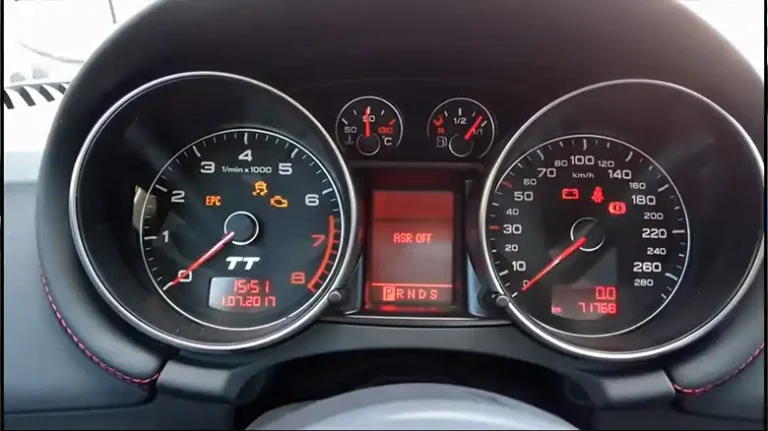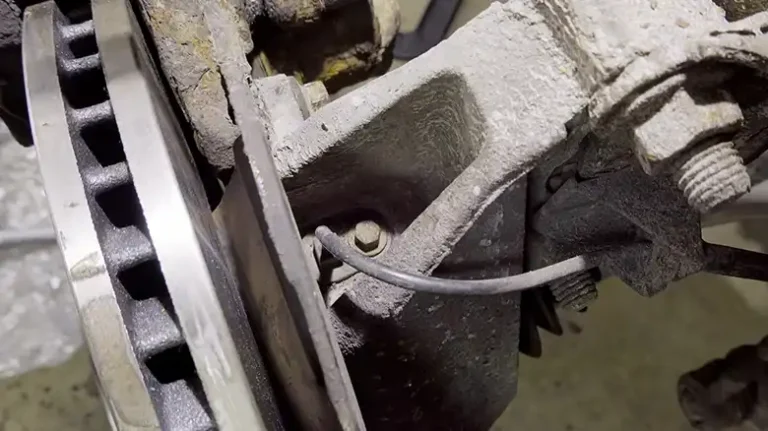What Is Active Brake Control? A Comprehensive Overview
In terms of the driving environment, safety is everyone’s top priority. Rising traffic and unpredictable road conditions present significant challenges. Active Brake Control, a modern safety feature, addresses the need for quick and precise emergency braking, ensuring road safety.
The problem I’ve often faced is that standard brakes, in emergency braking situations, may not respond quickly or efficiently enough. This delay can lead to accidents and collisions, as the traditional braking system struggles to adapt to rapidly changing circumstances.
Active Brake Control has been a game-changer for me. It enhances my vehicle’s brakes by detecting dangers and activating them proactively, reducing accident risks. It’s like a safety net, ensuring my car reacts effectively in emergencies.
As I explore further in this article, I’ll look at how Active Brake Control works, its benefits, and how it fits into modern cars. Whether you’re an experienced driver or new, understanding this tech is important for safer driving.
An Overview of Active Brake Control
Active Brake Control, also known as ABC, is a modern automotive safety feature that has become a significant part of the constantly improving field of vehicle safety. This technology works alongside a vehicle’s braking system, making sure that the brakes are used effectively to reduce possible collisions.
Active Brake Control employs a combination of sensors, cameras, and advanced algorithms to monitor the vehicle’s surroundings constantly. When it detects an impending collision, it intervenes by automatically applying the brakes or enhancing the driver’s braking effort to avoid or reduce the severity of the impact.
Active Brake Control is not just a feature for the experienced drivers; it’s a solution to an important issue – road safety. By reacting faster and more accurately than a human driver, ABC helps to reduce accidents, preserve lives, and minimize the frustrating agonies associated with collisions.
Types of Active Brake Control (ABC)
There are generally two main types of Active Brake Control:
1. Predictive Active Brake Control: This type uses sensors and cameras to anticipate potential collisions and can proactively engage the brakes to prevent or mitigate accidents.
2. Reactive Active Brake Control: This type primarily enhances the driver’s braking effort in response to a detected collision risk, ensuring the brakes are optimally applied to reduce the severity of impact.
Benefits of Active Brake Control
Active Brake Control benefits include faster reactions, increased driver confidence, and reduced collision severity, enhancing road safety and peace of mind. Let’s discuss the points briefly:
Improved Reaction Time
One of the primary benefits of Active Brake Control is that it significantly reduces the time it takes to engage the brakes when a potential collision is detected. This swift reaction time can be a lifesaver in critical situations.
Enhanced Driver Confidence
Knowing that your vehicle has an extra layer of protection can boost a driver’s confidence on the road. This technology acts as a safety net, ensuring that even if you momentarily lose focus, your car has your back.
Reduced Collision Severity
In case of a collision, Active Brake Control can mitigate the impact, potentially saving lives and reducing damage to the vehicle. It’s like having a guardian angel for your brakes.
Active Brake Control in Different Vehicles
Active Brake Control varies in its application across different types of vehicles, improving safety in cars, SUVs, and commercial vehicles alike. Now, let’s go in-depth into the discussions of these topics:
Passenger Cars
ABC is commonly found in modern passenger cars. Active Brake Control swiftly responds to potential collisions. This technology is incredibly valuable, especially in urban traffic, where quick reaction times can make a significant difference in avoiding accidents.
SUVs and Crossovers
SUVs and crossovers benefit greatly from Active Brake Control, with their higher center of gravity, and may require more distance to stop. Active Brake Control plays a crucial role in enhancing their safety. It ensures that these larger vehicles can stop as effectively as smaller cars, reducing the risk of accidents.
Commercial Vehicles
For larger commercial vehicles like trucks and buses, Active Brake Control is a game-changer. It helps prevent accidents on highways and crowded streets, safeguarding not only the vehicle and driver but also other road users. The technology’s ability to quickly apply the brakes can be especially important in emergency situations, making these vehicles safer for everyone on the road.
Technology Behind Active Brake Control
Let’s uncover the technology behind Active Brake Control (ABC) – the system that’s all about keeping you safe on the road. And at the heart of ABC’s brilliance is the magic of sensor integration.
Sensor Integration
- Detecting Potential Hazards: Picture having super-alert road companions – your vehicle’s sensors. They’re like silent co-pilots, spotting dangers. Beyond the car in front, they assess speed, distance, and potential risks, almost predicting trouble like a crystal ball.
- Interplay with Other Safety Systems: Now, here’s where teamwork comes in. These sensors don’t work alone; they team up with other safety systems in your vehicle. One of their best buddies is the Anti-lock Braking System (ABS).
Integration with Anti-lock Braking Systems (ABS)
- A Perfect Partnership: The ABC-ABS partnership is a synchronized dance. When sensors see danger, ABC talks to ABS for precise braking. They’re a superhero duo – ABC spots threats, and ABS makes brakes work perfectly.
- The Collective Impact on Overall Braking Efficiency: This teamwork leads to exceptional brake efficiency, taking safety to new heights. It’s not just braking; it’s advanced safety. Having this tech in your vehicle is comforting, ensuring your security on the road.
Challenges and Limitations of Active Brake Control
While Active Brake Control (ABC) is a remarkable safety system, it’s not without its challenges and limitations. Understanding these factors is crucial for a comprehensive view of its functionality.
Environmental and External Factors
- System Limitations in Adverse Weather Conditions: ABC faces challenges in bad weather. Rain, snow, or fog can stop sensors from spotting dangers. Limited visibility and slippery roads can make the system less effective in these situations.
- Impact on Performance in Specific Scenarios: ABC’s performance can suffer in certain situations. On bumpy or gravel roads, it might struggle with the changing surface. When unexpected obstacles pop up, it may not respond as quickly as needed.
Technological Constraints
- Challenges Related to System Accuracy: While ABC is highly advanced, it’s not infallible. It relies on complex sensors and algorithms, and there can be instances where the system misinterprets data or fails to recognize certain obstacles accurately.
- Potential System Malfunctions and Remedies: ABC, like any tech, can have issues. Car owners should stay watchful and maintain it. A quick sensor check or software update can often fix problems and keep the system running smoothly.
While ABC greatly enhances road safety, it’s essential to be aware of its limitations and challenges. By understanding these factors, drivers can take precautions to ensure their safety even in less-than-ideal conditions.
Q&A (Questions and Answers)
Q1: Is Active Brake Control the same as an Anti-lock Braking System (ABS)?
A: No, ABC and ABS are different. ABS prevents wheel lockup during braking, while ABC actively intervenes to prevent or reduce collisions.
Q2: Can Active Brake Control prevent all types of collisions?
A: It can prevent or reduce many collisions, but not all. Effectiveness depends on various factors.
Q3: How can I tell if my vehicle has Active Brake Control?
A: Check the owner’s manual or contact the manufacturer or dealership for information. Some vehicles display a warning light for ABC.
Q4: Is Active Brake Control available in older car models?
A: ABC is more common in newer vehicles, not typically found in older models.
Q5: Does Active Brake Control work in adverse weather conditions?
A: It works in various weather conditions, but effectiveness may be impacted by severity and road conditions.
Q6: Can Active Brake Control detect pedestrians and cyclists?
A: Yes, it can detect pedestrians and cyclists, enhancing safety.
Q7: What to do if Active Brake Control activates?
A: Keep hands on the wheel and be prepared to take control, avoiding sudden actions.
Q8: Are there maintenance requirements for Active Brake Control?
A: Typically, no. Follow regular vehicle maintenance guidelines.
Q9: How does Active Brake Control affect insurance premiums?
A: It may lead to discounts with some insurers due to enhanced safety.
Q10: Is Active Brake Control a standard feature available in all new vehicles?
A: No, its availability varies by make, model, and trim level.
The Sum Up
Active Brake Control is a remarkable technology that contributes to making our roads safer. It’s like having an extra set of eyes and a quick, precise foot on the brake pedal, ready to act when you need it most. So, do not get worried, if you’re driving a vehicle equipped with Active Brake Control – you’ve got the ultimate safety feature on your side.





![[Answered] Can I Drive My Car Without TPMS Sensors?](https://proautosafety.com/wp-content/uploads/2023/03/Can-I-Drive-My-Car-Without-TPMS-Sensors-768x431.webp)